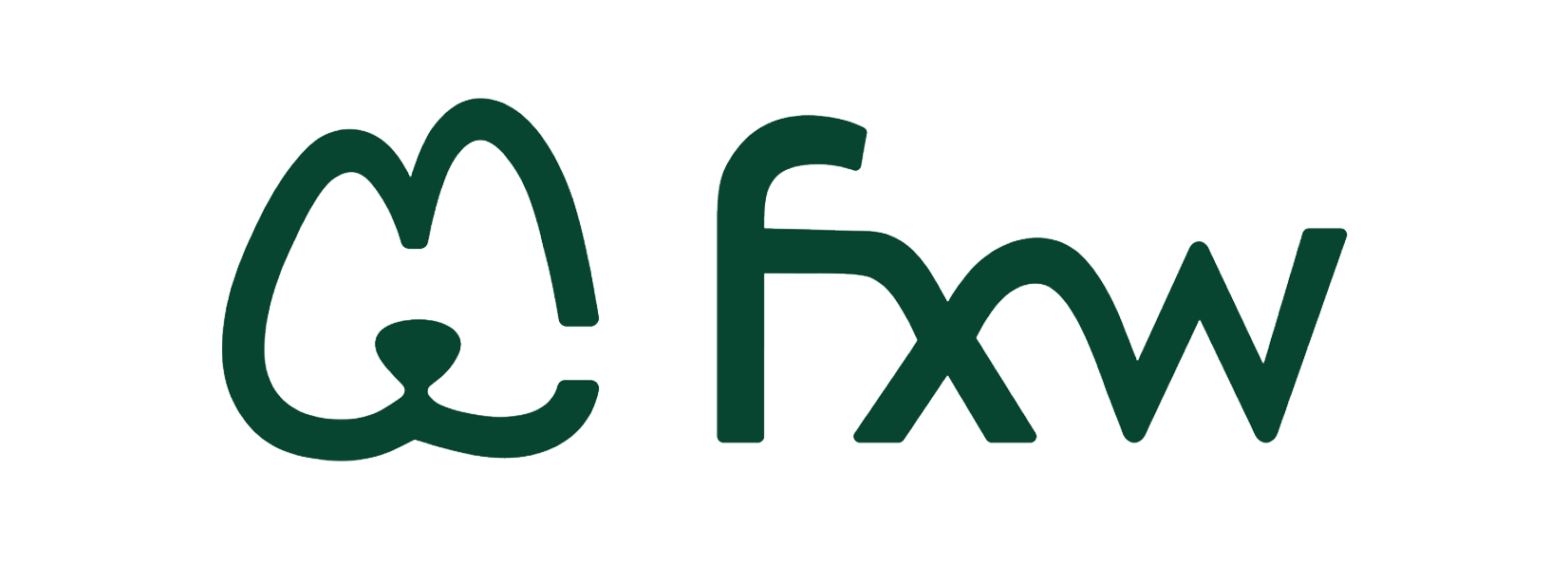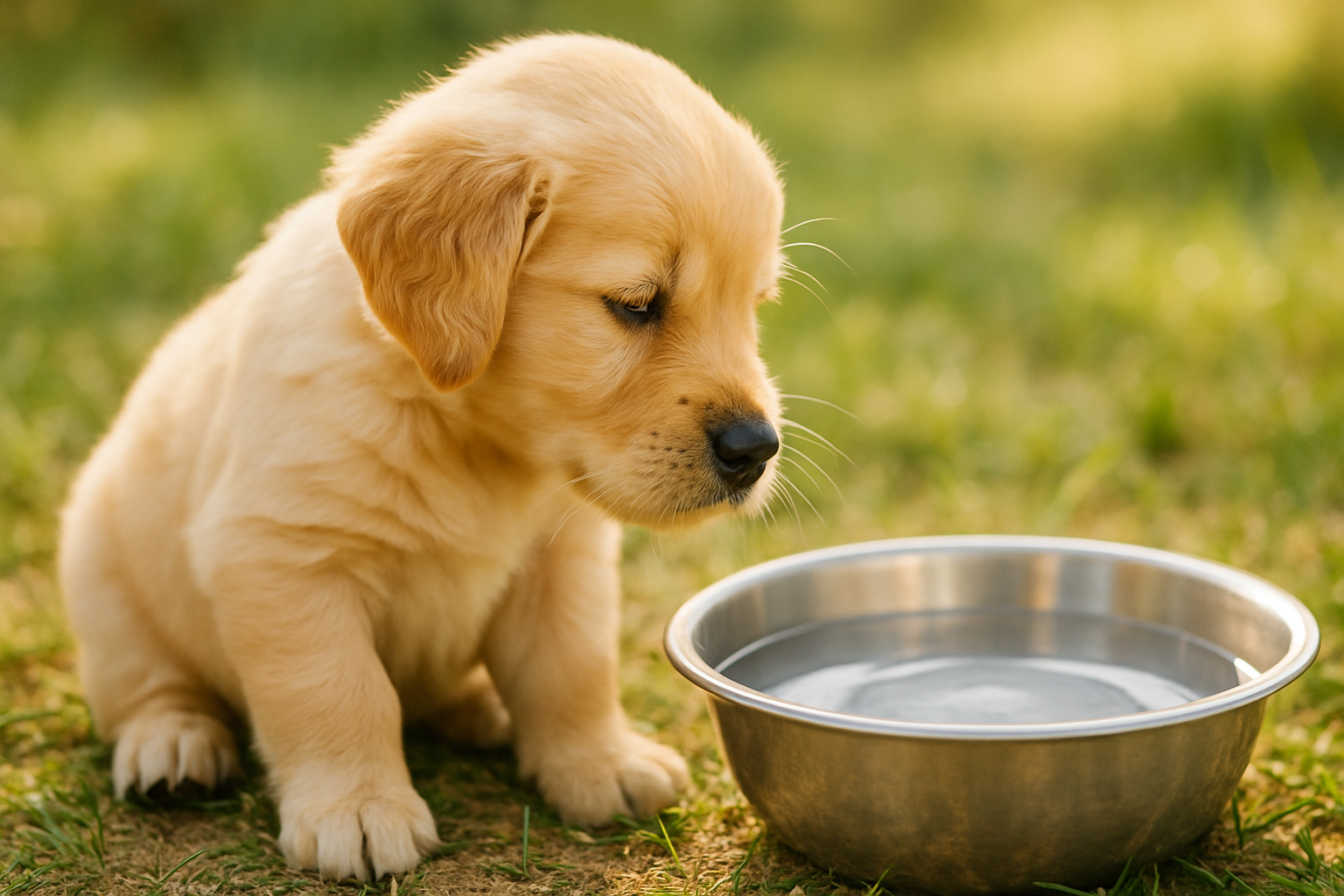Bringing a newborn puppy home can be really fun! But, water introduction can be really challenging for newborn puppies. For some breeds it's relatively easier, but with others it can be a big task. First impressions are very important. The wrong kind of water can develop fear and might start to avoid going into water. This guide might help you out with some tips on how to introduce newborn puppies and water.
Water helps newborn puppies in digestion , lubricating body tissues and improving overall health. Ideally, you can start introducing water to your newborn pup from around 3 to 4 weeks of age.
Understanding Puppy Development Stages
The first two weeks after your puppy is born are delicate. Their senses haven’t started working. So, they can not hear, see or smell anything. The thing they depend on is their mother’s milk for both nutrition and hydration. This stage is too early to introduce your puppy to water.
The stage between 2-4 weeks is when they start developing senses. They try to interact and by the end of 4th week they can even start to walk and bark. Although they still depend on mother’s milk, this is the time you start preparing for the weaning stage.
Weeks 4-8 are a busy time for your puppy. This is the stage where your puppy starts exploring new things. Therefore, this can be a great time to introduce them to water and solid food.They are curious. So, they can be exposed to everyday stimuli in the environment.
When to Start Giving Water to Puppies?
The ideal time to introduce your puppy to water is usually when they are 3-4 weeks old. Your puppy starts to interact with the environment during this stage. This is the best time to slowly wean them from mother’s milk and give them water.
Gradually introduce your puppy to water. If you see your puppy play with water, sniff around food, grow interest in trying out new things. These are the signs that your puppy is ready for water.
How to Introduce Water to Newborn Puppies?
Preparing the Water Bowl
-
Choosing the Right Water Bowl
Select a shallow water bowl for your puppy. This ensures that your puppy can drink water without the risk of drowning.
-
Safe Water Temperature
The water you give your puppy would be at room temperature. This is gentle on your puppy’s sensitive digestive system. Your puppy might avert water if it is too cold or too warm.
Introducing Water Slowly

-
How to Encourage Puppies to Drink
Place the water bowl in an area that is accessible. Puppies are curious so they will naturally explore what’s in the bowl. Many owners also place water bowls inside a dog bed area or playpen to create a safe and cozy drinking spot. In case your puppy hesitates, don't force them to drink water. This can cause fear. You can reward them with treats when they drink water.
-
Dip your finger in the bowl to motivate your puppy
If your puppy does not want to drink water, dip your finger into the water bowl. This will help your puppy lick your finger and gradually will start drinking the water.
Monitoring Water Intake
-
How Much Water Puppies Need Daily (AKC)
The amount of water your puppy needs in a day depends on their body weight. For example, puppies usually need 20-40 ml water per pound of body weight. If your puppy weighs 10 pounds, the amount of water it needs is somewhere around half cup to 1.5 cup.
-
Notice hydration signs
You need to notice if your puppy is drinking water properly. In case you notice your puppy is feeling lethargic, has dry nose, panting excessively, itchiness in skin, and constipation, these are signs of dehydration (PetMD).
How to teach your puppy to drink water?
Every puppy is unique. Some might learn how to drink water faster than others. Therefore, teaching a puppy to drink water requires patience. Start by placing a water bowl in a safe and quiet place. The area should be accessible and free from distractions. Then gently guide your puppy to the bowl. You can even use playful gestures or try putting a finger in the bowl to invite them.
Positive reinforcements can do wonders. Whenever your puppy drinks water, reward them with a treat or a gentle pat. This will encourage your puppy to repeat the behaviour.Avoid forcing your puppy to drink water. It might lead to fear and reduce their chances of drinking water.
Some common challenges and how you can overcome them

-
Puppies Refusing to Drink Water
Your puppy might not want to drink water because the process is new for them. You can try dipping your finger in the water. Let your puppy lick it. You can even add some chicken broth in the water to make it taste good. However, you should always consult a vet before you add food in water.
-
Fear of Water Bowls or Splashing Sounds
Some puppies might be scared of the splashing sound of water. You can use a shallow bowl. And, avoid making noise or movements when your puppy is drinking.
-
Drinking too much water
Your puppy might be too excited to drink water. And as a result, can consume more than they need. Offer a small amount of water in the bowl and keep a tab on how much water you are giving your puppy.
Safety Tips for Introducing Water
-
Always Use Clean, Fresh Water
Make sure you provide clean and fresh filtered water to your puppy. Offer a small amount of water in the bowl, or change the remaining water frequently. Stagnant water can have bacteria. It can lead to illness.
-
Avoid Deep Bowls to Prevent Accidental Drowning
Choose a shallow water bowl so that your puppy can drink water comfortably. Deep water bowls bear a risk of drowning. If your puppy is really small, deep bowls can be dangerous.
-
Supervise Puppies During Water Introduction
Always be near your puppy when you first introduce them to water. Notice how your puppy is interacting with water. Using a safe space like a dog playpen can help you supervise your puppy during this stage without constant chasing around. Your puppy will feel more comfortable when you're around, and also prevent the risk of accidents.
Transitioning Puppies to Regular Water Drinking
The phase from mother’s milk to water is sensitive. When your puppy is about 4 weeks old, place the water bowl near the feeding area. Once they start drinking water, gradually replace milk feedings. Weaning is a challenging phase.
Start by giving your puppy a mix of water and puppy food. Make sure the consistency is soft. When they start getting comfortable, gradually increase the portion as advised by the vet. Puppies can usually fully rely on water when they are about 7-8 weeks old. At this stage they no longer require mother’s milk.
Hydration and Puppy Health
Drinking water properly is important for your puppy’s health. Water helps maintain the body's temperature, proper digestion and the functioning of organs. Your puppy is drinking enough water if you see moist nose and gums, no signs of lethargy and elastic skin.
Sunken eyes, dry mouth and nose, excessive panting, loss of appetite and constipation. These mean your puppy needs more water. Consult a vet immediately if your puppy shows signs of dehydration for a long time.
Water and Puppy Food Introduction
In the weaning stage, prepare a mixture of water and puppy food. Make sure the mix is soft so that it's easier for your puppy to chew and digest. Providing meals inside a familiar space like a puppy playpen helps reduce mess and makes cleanup easier. The moisture in water will prevent choking. When your puppy starts getting used to it, gradually increase the food portion and reduce the water.
Special Considerations for Breeds and Climate

The amount of water your puppy needs depends on their breed and climate they are in. puppies in hot climates require more water to avoid overheating and dehydration. Puppies who belong to breeds smaller in size have faster metabolism and can require more water. Make sure you consult a vet about the quantity of water intake.
Long-Term Water Drinking Habits
-
Setting a Water Routine for Puppies
Set a water routine for your puppy. Give your puppy water at regular intervals. Pairing hydration time with resting in their dog bed can also help puppies feel secure and build healthy routines. This also helps your puppy maintain a regular bathroom schedule.
-
Encouraging Independent Water Drinking
Let your puppy explore the water bowl on its own. Keep the bowl in a place that is safe and accessible. Use positive reinforcements to get your puppy to drink water on its own.
-
Maintaining a Healthy Water-Drinking Environment
Keep the water bowl in an area that is clean. Give only fresh water to your puppy. In case there is water remaining in the bowl. Change it frequently to prevent contamination
Conclusion
Proper water introduction is important for your newborn puppy. It takes patience and nurturing. Ensure that your hydration habits are safe. Use positive reinforcements to encourage your puppy to drink water. Keep a track of its water intake. Gradually your puppy will get accustomed to water. Drinking water properly is important for your puppy’s long term health.
FAQs: Frequently Asked Questions
1. When should I introduce water to my puppy?
3-4 weeks old is a good time to introduce your puppy to water. The puppy is still dependent on mother’s milk. You can give water along with the milk. This will help your puppy slowly adapt to drinking water.
2. Is my puppy drinking enough water?
A few signs can let you know if your puppy drinks enough water. If a puppy's nose is damp and there are no signs of lethargy. Also, their gum is moist and pink in color. These are signs that your puppy drinks water adequately.
3. Is tap water or bottled water right for puppies?
There is no such restriction as to what kind of water your puppy should drink. However, make sure the water you provide is clean and safe. Bottled water is a good option. But, when it comes to tap water, make sure you filter it properly to remove any dirt.
4. My puppy is refusing to drink water. What should I do?
Add some flavor to the water. It might help. Try mixing a little chicken broth into the water to make it taste better. Make sure the water is at room temperature. You can even try dipping your finger in the bowl and let your puppy lick the water. If your puppy still refuses, consult a vet.
5. How much water does my puppy need in a day?
Your puppy needs about 30-40 ml of water per pound of their body weight. So, if your puppy is 10 pounds, it would need somewhere around 1 cup of water daily. Monitor the amount of water that you are giving your puppy daily, because too much water can cause bloating and vomiting.


Share:
Best Flooring Solutions for Indoor Dog Pens with a Floor
How to Break Up a Dog Fight: A Complete Guide to Staying Safe